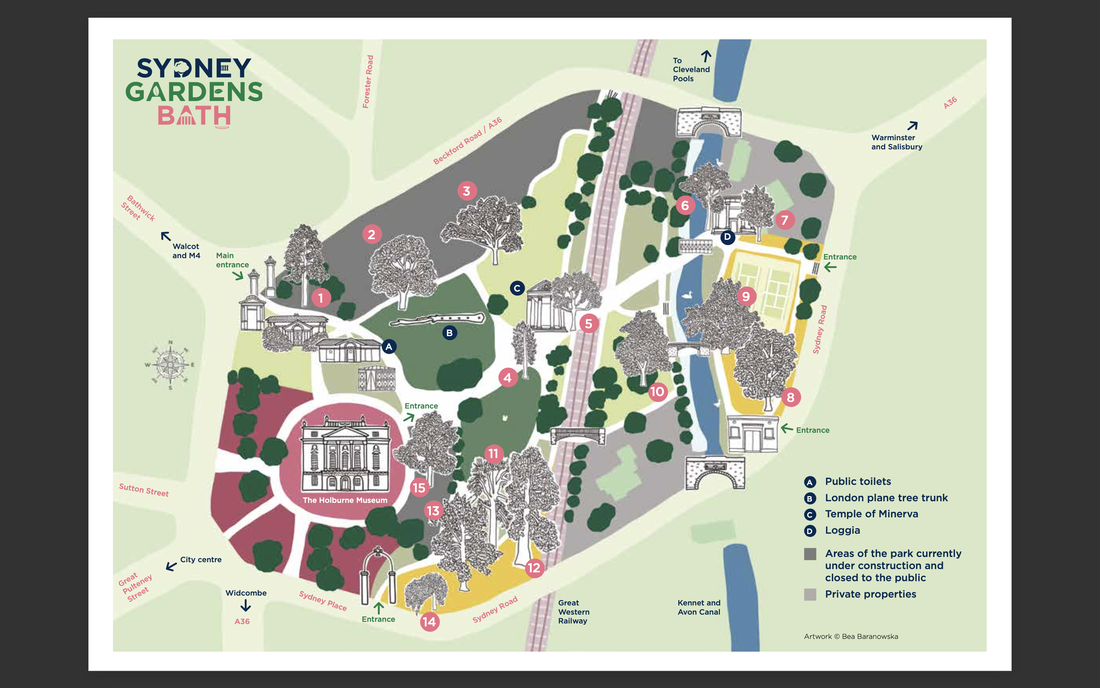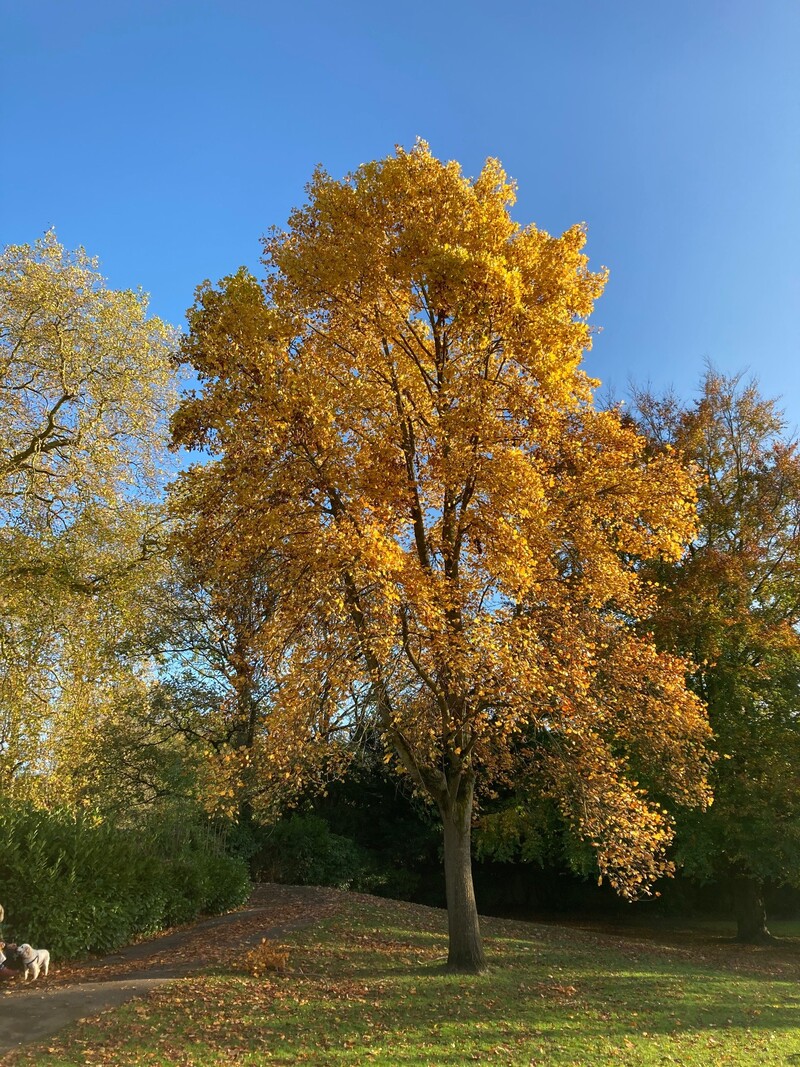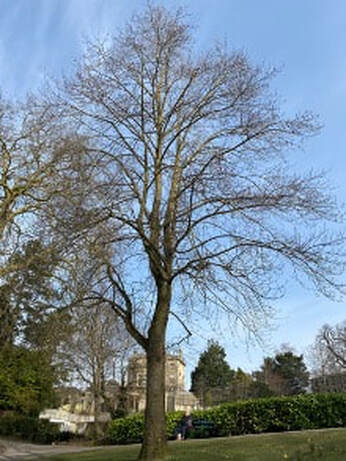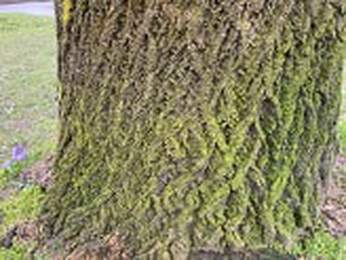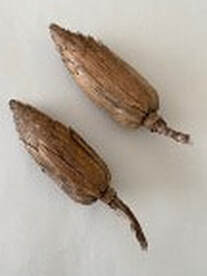After crossing the ornate canal bridge the Tulip Tree in Sydney Garden can be found in the grass area between the canal and the railway line. The Tulip Tree is a member of the magnolia family and is native of North America; the species was introduced into Britain around 1650.
The Tulip Tree is deciduous, tolerant of pollution and thrives in parks and gardens in the UK. The tree grows vigorously and can reach heights over 58m high, with a life span over 500 years. It is a ‘hardwood’ tree and its limbs often begin high up the column trunk, which makes it a valuable timber tree. The mature bark is brown, furrowed like a woven basket and aromatic. The new branchlets begin smooth and reddish in colour maturing to dark grey and eventually brown.
The leaves have four lobes growing up to 12-15cm wide and long: heart shaped. The colour of the leaf begins as light green and matures to a bright green; shining and smooth above, paler green beneath. In the autumn the leaves become a clear bright yellow.
In Britain the flowers are produced on mature trees, over 15 years of age, in May, this varies in warmer or cooler climates. They are shade tolerant but intolerant of drought.
The flowers are cupped shaped like a tulip, perfumed, yellow and green with orange markings around the base. Each flower is formed of 6 petals which stand vertically from the branch: about 4-5cm in height. The fruit develops in a cone shaped upright cluster of single winged seeds, which are dispersed by the wind.
Reference
Gazzard, G. A. MSc (2021) wrote the above article with information from the following sources.
Rose, B. BSc (Hons) MSc DipArb(RFS) MICFor RCArborA Chartered Arboriculturist Arboricultural Association Registered Consultant (2020). Bosky Trees, Arboricultural Impact Assessment & Tree Protection Plan for trees at Sydney Gardens, Bath. (Accessed 13/03/21).
Hiller Trees; Liriodendron tulipifera, Tulip Tree. (Accessed 13/03/21). Available at:
https://www.hillier.co.uk/trees/listings/liriodendron-tulipifera/
Britannica; Tulip Tree. (Accessed 13/03/21). Available at:
https://www.britannica.com/plant/tulip-tree
Wikipedia; Tulip Tree. (Accessed 13/03/21). Available at:
https://en.wikipedia.org/wiki/Liriodendron
